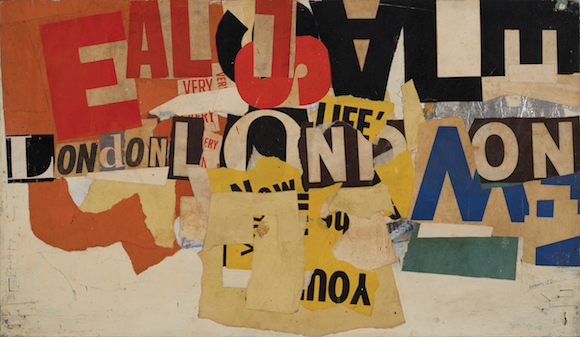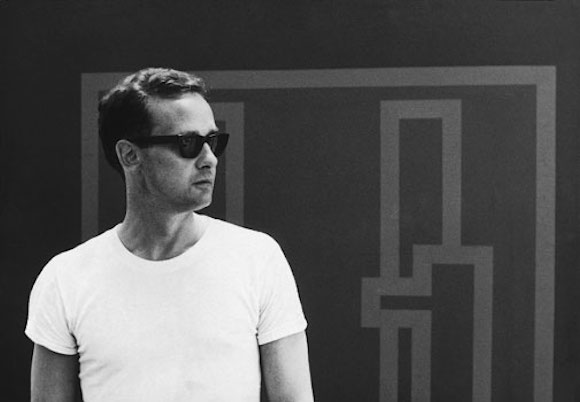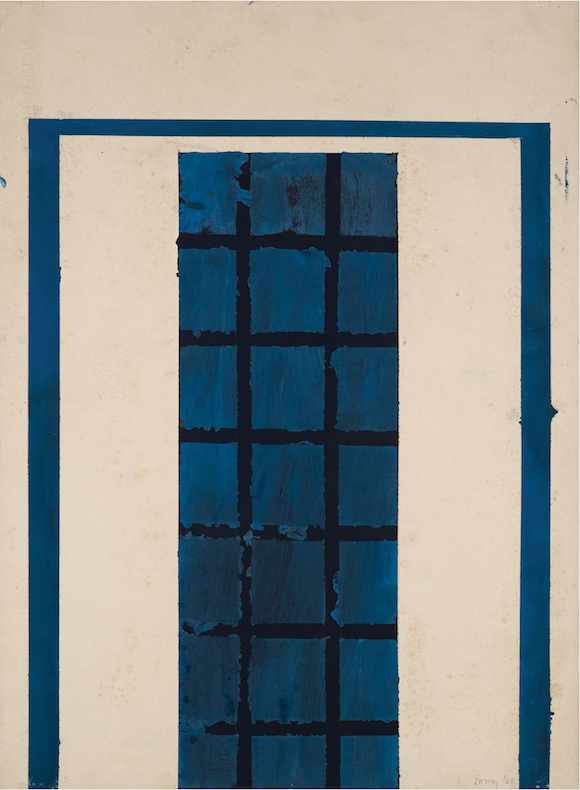A matter of scale: New exhibition casts an intriguing and intimate light on Robyn Denny’s working practices

//Maquette for Great Big Biggest Wide London, 1958. 5.6 x 61cm//

//Robyn Denny, 1961. Photo: Bernard Jacobson Gallery//
The late British abstract artist Robyn Denny is best known for his large-scale works, such as Great Big Biggest Wide London, the giant 1959 mural for menswear company Austin Reed’s Regent Street store.

//Maquette, Portuguese Airlines, gouache, 1961. 2 x 20.3cm//
In the words of illustrator Peter Knock, who paid tribute here on news of Denny’s death at the age of 83 in 2014, this “conveyed classic 1960s new age optimism, and received the ultimate seal of approval as a piece defining of its era when The Beatles asked to be photographed standing in front of it”.
And so an intriguing new exhibition of Denny’s works on paper promises to cast an intimate new light on the artist’s working practices.

//Untitled, 1961, gouache on card. 63.2 x 48.3cm//
Opening at London’s Bernard Jacobson Gallery on Thursday (October 11), the exhibits, some of which measure just a few centimetres compared with their realisations as giant pieces, have been culled from the extensive archive Denny left behind and include previously unexhibited process materials such as the maquettes for the Austin Reed mural as well as a lesser known one for Portuguese Airlines dating from 1961.

//December 25, 1954, collage on paper. 2.4 x 18cm//
Denny is most associated with the 60s British school emanating from such art schools as the Royal College, but Works On Paper displays his willingness to break the boundaries of accepted art practice from the early 50s to the end of his life.

//Untitled, 2004, acrylic on paper. 35.3 x 70.5cm//
“It’s unusual to see his work at such a small scale,” says the artist’s son Dom Denny. “There’s something intimate about these works on paper. The proximity means that you can see how he was working things out, through the brush strokes and pen marks. The early 50s collages are particularly fascinating for me because they show the methods he adopted to hold together ideas and then work them up in terms of size. Throughout the exhibition there are jumping off points to the bigger pictures.”
One of the aims of Works On Paper is to stress Denny’s significance in the development of contemporary artistic practice with such fellow travellers as the painter Richard Smith. “We hope it shows visitors that, particularly from the early 50s and into the early 60s, he and people such as Dick Smith really hit a wave,” says Dom Denny. “They were very brave and challenging artists who took on the traditions and institutions, particularly in the way that art was taught in the schools at that time.”
Meanwhile the hunt is on for the final version of Great Big Biggest Wide London. “It was last seen in a Swinging Sixties exhibition at the Barbican a few years back,” says Dom Denny. “Any information its current location would be gratefully received.”
Robyn Denny: Works On Paper runs until November 16. More details here.
